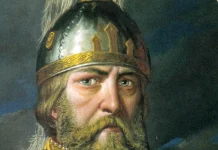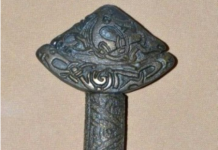At around 1800, famous English traveler Edward Daniel Clarke described his first impressions after meeting Ukrainians: “We began to perceive that the farther we advanced from the common hordes of the Russians, the more politeness and hospitality we should experience; exactly the reverse of that which we had been taught to expect by the inhabitants of Moscow… The first regular establishment of Malo-Russians [Ukrainians] which we saw, occurred after leaving [village of] lestakovo. It was called Locova Sloboda. The houses were all whitewashed, like many of the cottages in Wales; and this operation is performed annually, with great care. Such distinguishing cleanliness appeared within them, that a traveller might fancy himself transported, in the course of a few miles, from Russia to Holland. Their apartments, even the ceilings and the beams of the roof, are regularly washed. Their tables and benches shine with washing and rubbing, and reminded us of the interior of cottages in Norway. Their courtyard, stables, and out-houses, with everything belonging to them, bespoke industry and neatness. In their little kitchens, instead of the darkness and smoky hue of the Russians, even the mouths of their stoves were white. Their utensils and domestic vessels were all bright and well polished. They kept poultry, and had plenty of cattle. Their little gardens were filled with fruit-trees, which gave an English character to their houses the third nation with whose dwellings I have compared the cottages of Malo-Russia; that is to say, having a Welsh exterior, a Norwegian interior, and the gardens and out-houses of the English peasantry.
We proceeded from Paulovoskoy to Kazinskoy khutor, a village inhabited by Malo-Russians and Russians mingled together. The distinction between the two people might be made without the smallest inquiry, from the striking contrast between filth and cleanliness. In the stable of the post house we found about twenty horses, kept with a degree of neatness which would have done credit to any nobleman’s stud in Britain. The house of the superintendant villager was equally admirable; every thing appeared clean and decent, there was no litter nor was any thing out of its place. It was quite a new thing to us, to hesitate whether we should clean our boots before walking into an apartment, on the floor of which I would rather have dined, than on the table of any Russian prince…
Their language is pleasing, and full of diminutives. But the resemblance which these people bear, in certain circumstances of dress and manners, to the Scottish Highlanders, is very remarkable.”










